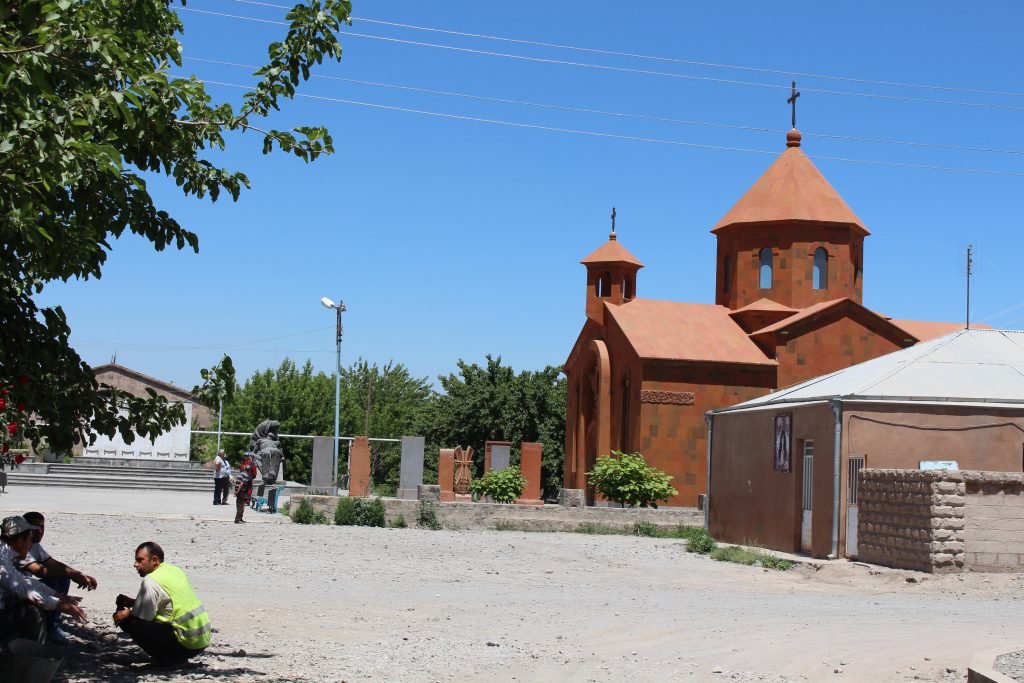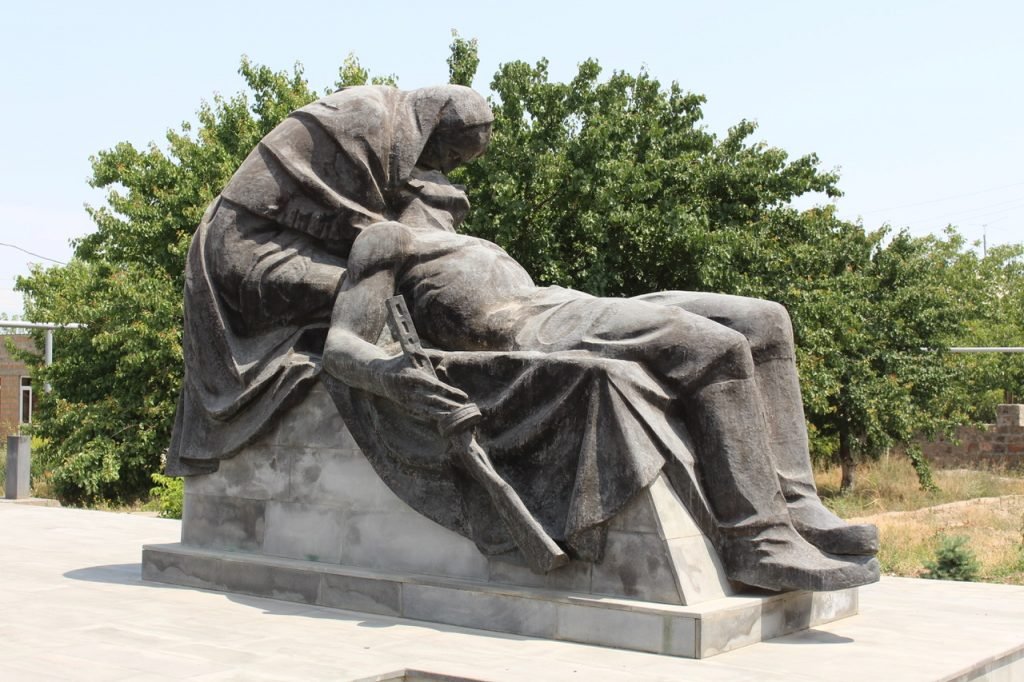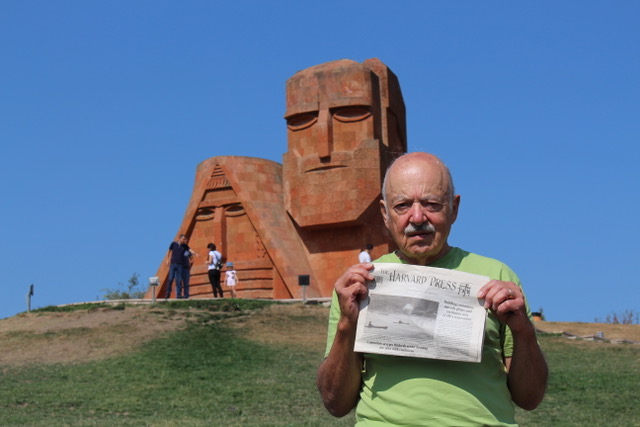Janfida is a village on Armavir province’s south central border with Turkey. From the village, Mount Ararat is clearly visible through the summer haze. Nearby, atop a hill, are the ruins of Urartu’s ancient Argishtikhinilli fortress (776 B.C.). Immediately south of the village is the security zone along the Armenian-Turkish border which is patrolled by CIS (primarily Russian) forces; the Arax river being the actual border.

Ancient civilizations here are attested by Urartian artifacts found in or near the village, and by early medieval Armenian artifacts discovered in 1990. Just outside the village, in what was a medieval Armenian and Kurdish cemetery, khachkars (cross stones) were found from the 7-8th century. Just across the nearby Arax river, in what is now Turkey, my map shows a number of churches, which are undoubtedly Armenian.

During past centuries, much of the Armenian population here was forced to leave due to invasions by Turks and Persians who fought over this territory. Later Russia occupied this region. From 1828-1830 many displaced Armenians returned here to what became Russian Armenia, part of the Russian Empire, thanks to provisions of the Treaty of Turkmanchay. This treaty terminated the Russo-Persian war of 1826-1828 and guaranteed the right of Armenians to return to their homeland. This treaty, negotiated by Russian playwright and diplomat Alexander Griboyedov, played an important role in restoring the demographics of Caucasian Armenia. A statue of this hero stands on Tigran Metz street in Yerevan, with a village in Armenia’s Armavir province named in his honor as well. While still in Persia he was killed by a mob.

During the Armenian Genocide and its aftermath, many of the survivors found refuge in Caucasian Armenia. This included many of the ancestors of Janfida’s current families, whose origins are in Van, Mush, Sasun, and other Western Armenian regions. Initially these survivors sought refuge near Lake Sevan, but later moved to Janfida, closer to their ancestral villages, intending to return at the conclusion of WWI. But that was not to be.

In the early 1940s, at the onset of WWII, many Kurds who remained here decided to relocate to Turkey, across the Arax river. Though the border was closed, they somehow managed the move.

Turkey, though “neutral” during most of WWII, was sympathetic to Germany. Shortly before the end of the war, Turkey hypocritically sided with the allies. It was believed, however, that Turkey might take advantage of the war to invade Soviet Armenia. Though this did not happen, preparations were made for such an eventuality. On the opposite side of Janfida village from the Turkish border, there remains concrete bunkers with tank turrets on top—their barrels pointing towards Turkey.

From 1941-1945, 121 citizens of Janfida, out of a total population of about 1,400, fought in WWII. Of these, 87 died. Additionally, many were wounded. In memory of the large sacrifice this village made during the war, noted sculptor Ara Sargsyan sculpted a memorial statue, which stands in the village center, next to the St. Garabed (2014) Church.

The memorial’s sculptor was born near Constantinople displayed enormous artistic talent in his youth. In the aftermath of the genocide, while studying art in Europe, he was a clandestine Nemesis operative and friend of Arshavir Shiragian, helping impose justice on those responsible for the Armenian Genocide. Concealing his Armenian Revolutionary Federation (ARF)-Nemesis activities, he moved to Soviet Armenia where he played a key role in establishing Armenia’s artistic institutions. While recovering from a non-life-threatening injury in the hospital he unexplainably died, likely the work of the KGB, who likely discovered his previous activities and considered him dangerous, although he participated in no anti-Soviet activities.
At the onset of the Artsakh (Karabagh) liberation movement, a detachment of Janfida volunteers, the “Black Panthers”, served in Artsakh. Sixteen of these volunteers sacrificed their lives during the struggle. Others chose to remain in Artsakh establishing a village with the same name, Janfida, in Artsakh’s Kashatagh province.

Janfida’s current population is around 3,500, and unlike many other villages, is stable, with only a few choosing to leave the village. The economy is based on growing apricots and cherries, with some wheat grown as well. Three hundred students are enrolled in Janfida’s school system with 90 children in kindergarten. Roads to the village are good. We traveled via train from Yerevan’s Sasuntsi Davit station to Armavir, the center of the province, and from there by cab to nearby Janfida. The train fare was less than a dollar and took about an hour.
The name “Janfida” is a commonly used term for irregular Armenian freedom fighters; heroes. It appears the name was used prior to 1900 but exactly when or under what circumstances the name was adopted is unknown.
The area around Armavir city contains much of interest. There is the Sardarabad museum and war memorial, the ancient Metsamor archaeological site and museum, the ancient Urartian fortress of Argishtikhinili atop a nearby hill, and when in season the local apricots are amazingly sweet. And there is Janfida village—its history, and its people.



I want to live there!!!